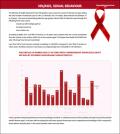What's New
Displaying results 3241 - 3250 of 4052
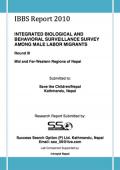
Resource | Publications,
This is the third round of the Integrated Bio-Behavioral Surveillance Survey (IBBS) conducted in 2010 to collect behavioral data from labor migrants in the mid and far western districts of Nepal. This round was conducted to obtain updated estimates of the prevalence of HIV among the labor migrants and also aimed to assess the changes that have taken place in the migration trends and the sexual behavior of the labor migrants in the mid and far western region of Nepal. The overall objective of the study is to determine the prevalence of HIV among returnee male labor migrants from India and to assess their HIV/STI risk-related behaviors.
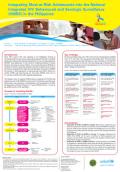
Resource | Fact Sheets,
Since 2007, passive HIV case reporting in the Philippines showed an increasing number of cases from younger age-groups (20-29 years). Anecdotal reports also indicated that substantial proportions of most-at-risk populations (MARP) were adolescents. It was critical to understand patterns of sexual behavior and drug-use among Filipino most-at-risk adolescents (MARA) to establish an effective prevention program and deliver needed services. Since the National Integrated HIV Behavioral and Serologic Surveillance (IHBSS) was limited to adult populations of injecting drug users (IDU), female sex workers (FSW) and males having sex with males (MSM), there was no official data on MARA for better-targeted programming.

Resource | Presentations,
This is the presentation from BROS Khmer's use of the mobile bus and audio computer-assisted self-interviewing (ACASI) to conduct an HIV Behavioral Serosurvey among urban men in eight Cambodia cities.
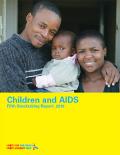
Resource | Publications,
For nearly three decades, HIV and AIDS have been devastating individuals and families with the tragedy of untimely death and medical, financial and social burdens. Although children's concerns have always been present within the great spectrum of need associated with HIV, they have to some extent been overshadowed by the very scale of the epidemic in the adult population.
Thanks to improved evidence and accelerated action, however, the story of how the AIDS epidemic is affecting children is being rewritten.
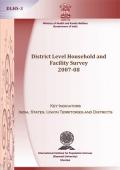
Resource | Publications,
The District Level Household and Facility Survey is one of the largest ever demographic and health surveys carried out in India, with a sample size of about seven lakh households covering all districts of the country. The Ministry of Health and Family Welfare (MoHFW), Government of India, initiated the District Level Household and Facility Survey (DLHS) in 1997 to provide district level estimates on health indicators to assist policy makers and program administrators in decentralized planning, monitoring and evaluation.
This volume gives information on key indicators at the state and district levels for all States/Union Territories (excluding Nagaland).
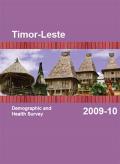
Resource | Publications,
The 2009-10 Timor-Leste Demographic and Health Survey (TLDHS) is the second national level population and health survey conducted in Timor-Leste and the first conducted as part of the global Demographic and Health Surveys (DHS) program. The sample for the survey was selected independently in every stratum, through a twostage selection process, to provide estimates for each of the 13 districts and for both urban and rural areas of the country. The 2009-10 TLDHS was designed to cover a nationally representative sample of residential households, taking into account nonresponse; to obtain completed interviews of women age 15-49 in every selected household; and to obtain completed interviews of men age 15-49 in every third selected household.
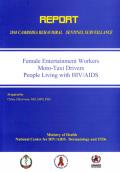
Resource | Publications,
In 2010, the eight round of Behavioral Sentinel Surveillance (BSS) has been conducted. The study was conducted in 5 main cities/provinces among female entertainment workers, moto-taxi driver and AIDS patients receiving care in the AIDS treatment centers. As results, the consistent condom use with paying clients and with sweethearts has remained relatively stable in the past five years among female entertainment workers who reported having more than 2 clients per day. Still, there are some indications of a slow but steady decline in consistent condom use, and this will need to be addressed in future prevention interventions.
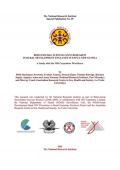
Resource | Publications,
WR Carpenter Estates operates in an area of higher HIV prevalence in Western Highlands Province. The various tea and coffee estates are situated in proximity to and along the Highlands Highway and they employ large numbers of workers from the Highlands provinces. WR Carpenter Estates was invited as a prioritized site for national behavioural surveillance research by the National Department of Health and the NRI BSS team who collected the data that this report is based on in late 2008.
The data from this report creates a baseline to support NDoH national behavioral surveillance monitoring and trend data collection. The data also create a baseline for monitoring the NDoH/ADB HIV Prevention in Rural Economic Enclave Project with the WR Carpenters coffee and tea plantation workforce.
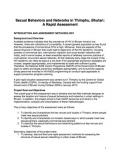
Resource | Publications,
A pilot rapid situation assessment was carried out in Thimphu by the Centre for Global Public Health (CGPH), University of Manitoba, Canada with the funding support from Government of Bhutan during October 2009 to January 2010. The overall goal of this assessment was to develop and test field methods designed to assess the location and nature of sexual behaviours and networks in urban settings in Bhutan.






